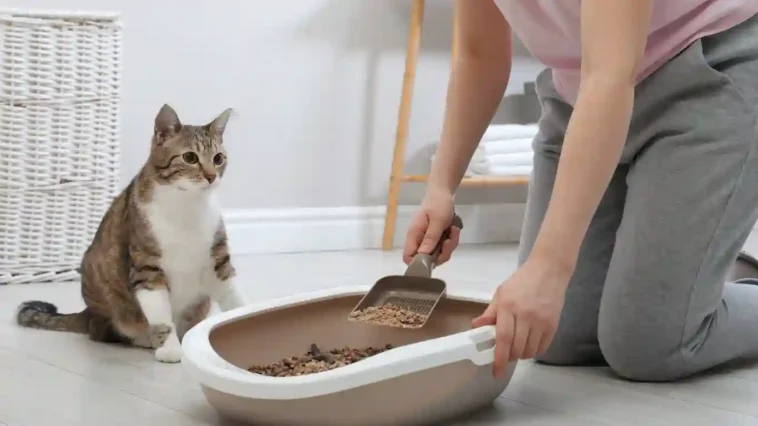You bring home a new cat. You set up a cozy litter box in a quiet corner. Everything looks perfect—until you realize your cat has other plans. Maybe it’s the carpet, the laundry basket, or that spot behind the couch.
Frustrating? Yes. But you’re not alone, and more importantly, your cat isn’t being “bad”—they’re just confused. The good news? You can guide your cat, whether a kitten or a full-grown adult, to use the litter box.
First, Why Do Some Cats Skip the Litter Box?
Before you get into training mode, take a step back. There’s usually a reason a cat avoids the box—and understanding it makes fixing it way easier.
Here are a few common causes:
- The box isn’t clean enough
- They don’t like the type of litter
- The box is too small or hard to reach
- Health issues like urinary infections or constipation
- They were never trained in the first place
It’s never about revenge or being stubborn (even if it feels that way when you’re scrubbing the rug for the third time).
Do Mother Cats Teach Kittens to Use Litter Boxes?
This might surprise you—yes, they do.
Mother cats usually encourage their kittens to go to specific areas once they’re around 3 to 4 weeks old. Kittens learn by watching her and copying. That’s why many kittens seem to “just know” what to do when you bring them home.
But if a kitten was orphaned or didn’t get much time with mom, they might need extra help. And that’s okay—think of it as potty training, but with fewer diapers and more scooping.
Setting the Stage: The Perfect Litter Box Setup
Cats are picky. The proper setup makes a huge difference when trying to guide them.
Choose the Right Litter Box
- Go for a low-sided box for kittens or senior cats.
- Large enough so they can comfortably turn around.
- Skip the covered boxes for now—some cats hate feeling trapped.
Pick the Right Litter
- Unscented, clumping litter is usually the safest bet.
- Avoid heavily perfumed types. What smells clean to you might smell like an attack on your cat.
Box Placement Matters
- Quiet, private, but not entirely isolated.
- Keep it far from food and water bowls.
- Avoid high-traffic or noisy spots like laundry rooms or near busy doors.
And don’t forget to scoop daily. Would you want to step into a dirty bathroom?
How to Train a Kitten to Use the Litter Box
Kittens usually learn fast but still need your help, especially during the first few days.
Step-by-step:
- Gently place your kitten in the litter box after meals and naps.
- Scratch their front paws in the litter to show them what to do.
- Praise them if they use it—even a gentle “Good kitty” can work wonders.
- Clean up any accidents with enzyme cleaners, not vinegar or bleach. Those smells can confuse them.
If they miss the box? No scolding. They’re learning.
How to Train an Older Cat to Use a Litter Tray
Older cats can be litter trained—even if they’ve never used one. You just need to go slow and stay patient.
Step 1: Rule Out Medical Issues
If your adult cat suddenly stops using the litter box, it’s worth checking with a vet. Urinary tract infections, arthritis, or even stress can be behind the problem.
Step 2: Find a Litter They Like
Try a few options—place multiple litter trays side by side with different types of litter. Let your cat choose. You might be surprised which one they prefer.
Step 3: Use Positive Association
Place the litter tray where they’re already going, then slowly move it toward your desired spot. Add treats or playtime nearby so they associate that area with good things.
Some older cats respond well to training litter attractants, too—they’re like scented guides to help them find the right spot.
When Is It Too Late to Litter Train a Cat?
Honestly? It’s never too late.
Sure, it might take longer with an older or previously outdoor-only cat. But most cats can be trained with consistency, a good setup, and positive reinforcement.
The key is understanding that habits take time to form—patience pays off.
What to Do If Your Cat Has Accidents
Accidents happen. Here’s how to handle them:
- Stay calm. Yelling won’t help and might make things worse.
- Clean thoroughly with an enzymatic cleaner (available at most pet stores).
- Don’t rub their nose in it—it doesn’t teach anything.
- Watch for patterns. Are they avoiding the box at certain times or in certain areas?
You’re not just fixing a problem—you’re building trust.
Avoid These Common Mistakes
- Using a box that’s too small
- Keeping just one litter box for multiple cats
- Putting the box next to noisy appliances
- Switching litter brands too often
- Punishing the cat for accidents
Think of it this way: Would you want to use a bathroom next to the washing machine that vibrates like an earthquake?
Bonus Tip: Keep the Whole House Cat-Friendly
A calm and comfortable cat is likelier to stick to the litter box routine. That means:
- Quiet places to nap
- Scratching posts to burn energy
- Clean, predictable routines
- And yes—even flea control
A cat bothered by fleas might avoid the litter box because they’re uncomfortable. If you’re dealing with itching and scratching, try a homemade flea spray for cats using diluted apple cider vinegar and water (just mist, don’t soak). Keep the litter box area flea-free, too.
FAQs
Do cats naturally know how to use a litter box?
Many do, especially kittens who spend time with their mother. But others may need gentle training and encouragement.
How many litter boxes do I need?
The golden rule: one box per cat, plus one. So, two cats = three boxes.
Can I litter train a stray or feral cat?
Yes, but it may take more time and trust. Start with a large tray of dirt or sand, then gradually transition to litter.
Should I change the location of the box often?
No. Cats like consistency. Once they’ve found their spot, stick with it unless necessary.
Why is my cat pooping outside the litter box but still peeing in it?
It could be a sign of stress, a dislike of the litter, or even a medical issue. Check with your vet and ensure the litter box is clean and easily accessible.
Final Thoughts — Your Cat Wants to Get It Right
Here’s the thing: no cat wants to upset you. When they go outside the litter box, they’re not being naughty—they’re trying to communicate something. Maybe they’re confused, anxious, or simply unsure where to go.
You’re their guide. With patience, a lot of love, and a clean, welcoming setup, you can teach your cat to use the litter box—and stick with it.
And that moment when they finally get it right, tail held high, proud of themselves? That’s a small win that feels huge.
Keep showing up for them. They’re learning, and so are you—and that’s pretty incredible.






GIPHY App Key not set. Please check settings